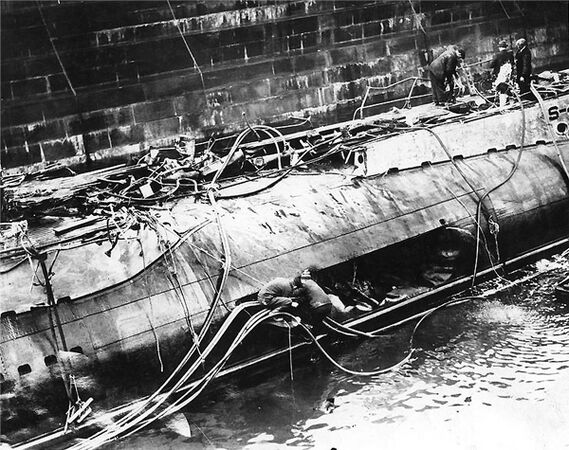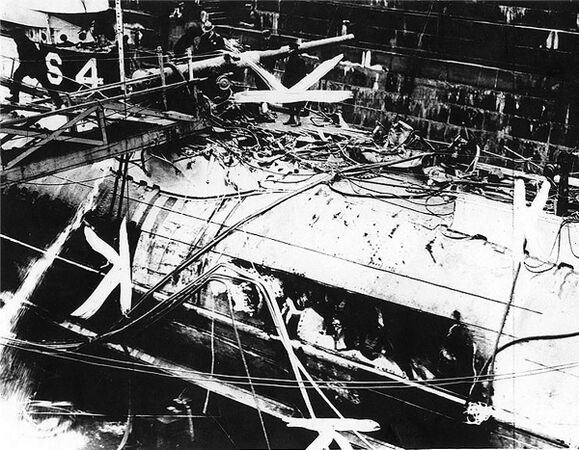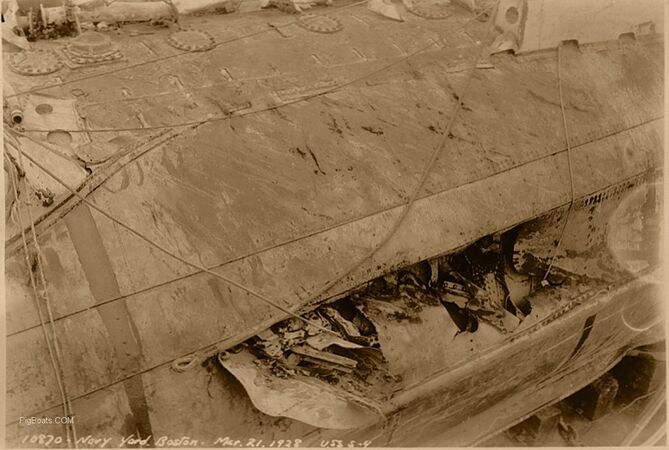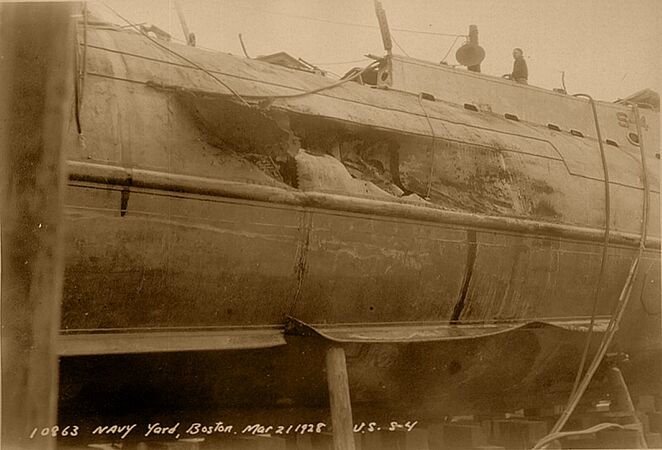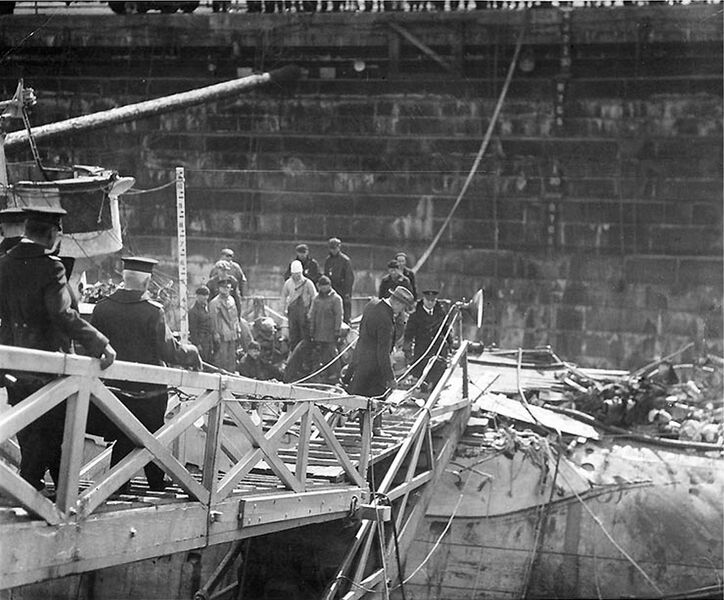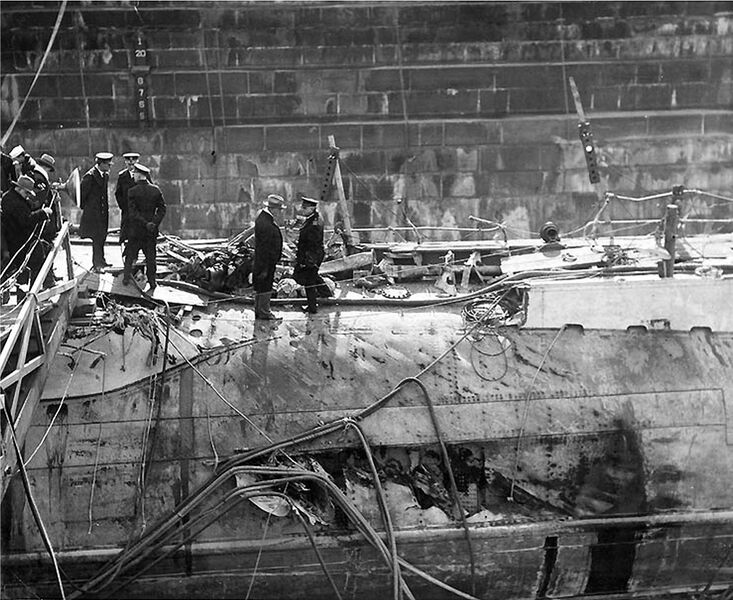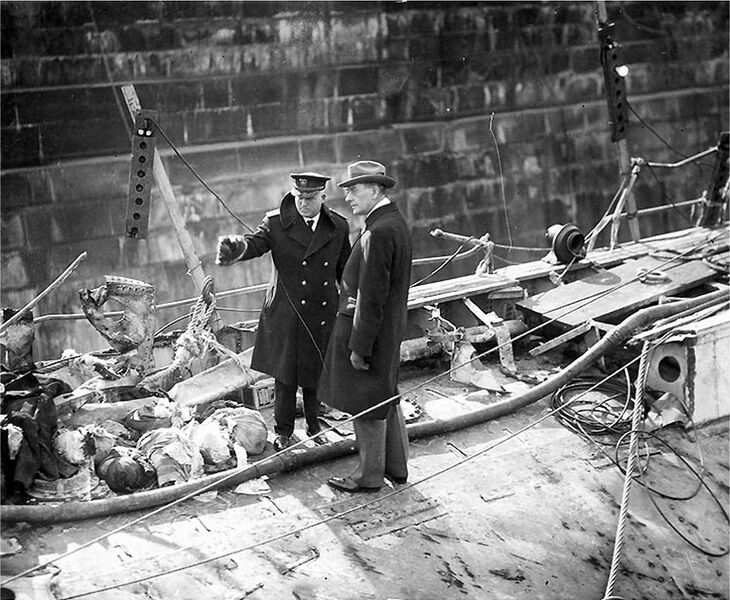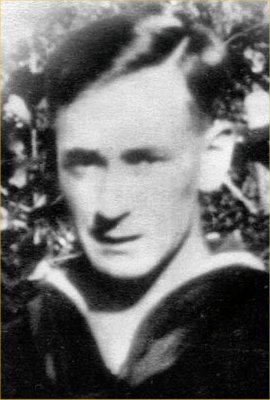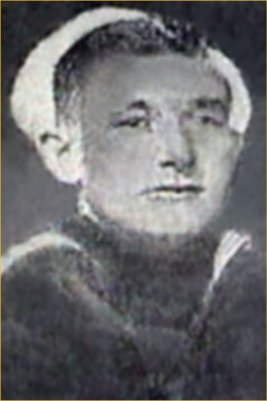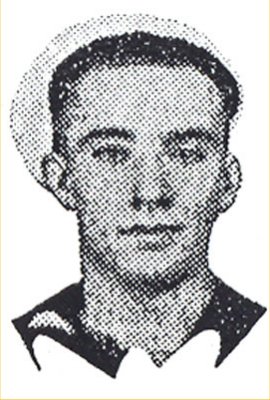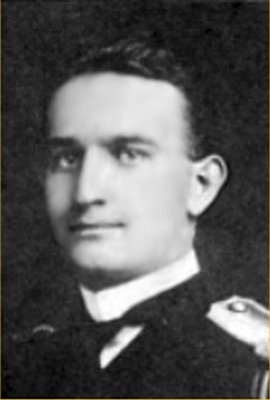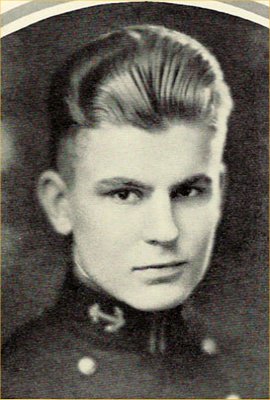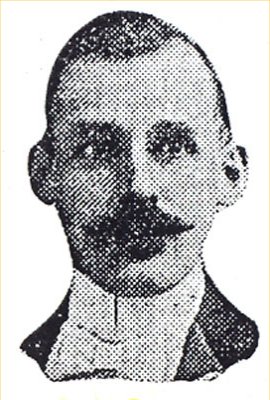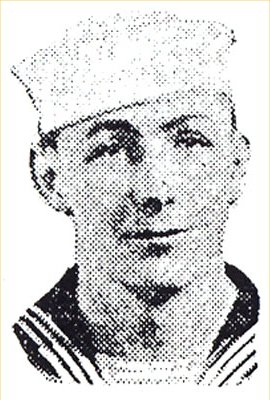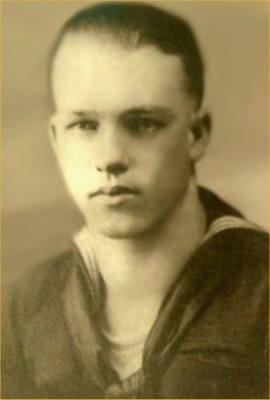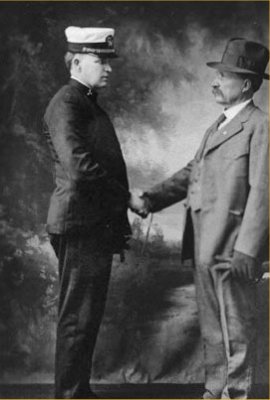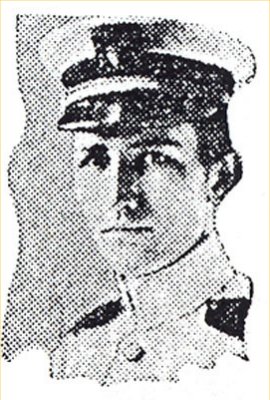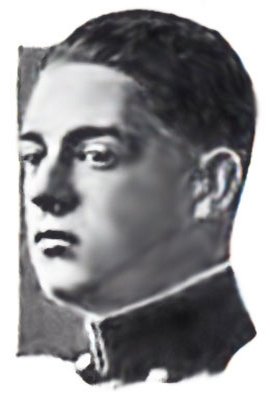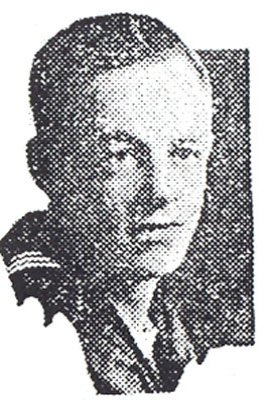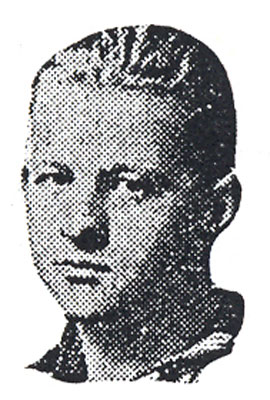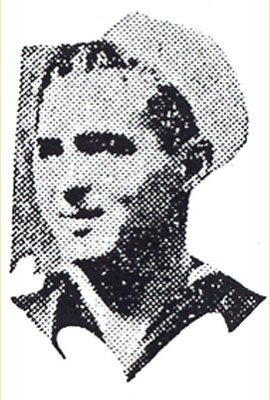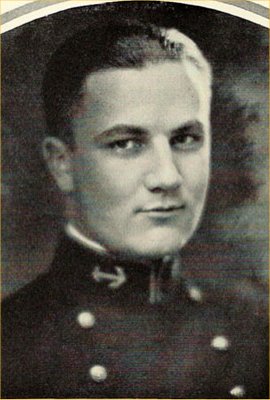S-4 salvage: Difference between revisions
Pbcjohnston (talk | contribs) Added captions |
Pbcjohnston (talk | contribs) Added captions |
||
| Line 69: | Line 69: | ||
[[File:S-4 damage 2.jpg|left|500px]] | [[File:S-4 damage 2.jpg|left|500px]] | ||
<div style="text-align: justify;"><span style="color:#00008B">A good view of the hole in the starboard side of the S-4. The Paulding struck the S-4 at nearly head-on, and once the Paulding's forefoot broke off inside the submarine's hull, the ship slid up and over the hull and scraping it as it went past. It then struck the superstructure and heavily damaged it before the S-4 sank below the ship | <div style="text-align: justify;"><span style="color:#00008B">A good view of the hole in the starboard side of the S-4. The Paulding struck the S-4 at nearly head-on, and once the Paulding's forefoot broke off inside the submarine's hull, the ship slid up and over the hull and scraping it as it went past. It then struck the superstructure and heavily damaged it before the S-4 sank below the ship. | ||
<small>mage provided courtesy of the Stephen B. Luce Library, SUNY Maritime College, Papers of John S. Baylis via Joe Williams.</small> | <small>mage provided courtesy of the Stephen B. Luce Library, SUNY Maritime College, Papers of John S. Baylis via Joe Williams.</small> | ||
| Line 75: | Line 75: | ||
[[File:Red bar sub new.jpg]] | [[File:Red bar sub new.jpg]] | ||
<center> | |||
<div style="text-align: justify;"><span style="color:#00008B"> | <gallery mode="packed" widths="400px" heights="300px"> | ||
File:S-4 damage 5.jpg|<small>U.S. Navy photo.</small> | |||
File:S-4 damage 6.jpg|<small>U.S. Navy photo.</small> | |||
File:S-4 damage 3.jpg|<small>Image provided courtesy of the Stephen B. Luce Library, SUNY Maritime College, Papers of John S. Baylis via Joe Williams.</small> | |||
File:S-4 damage 4.jpg|<small>Image provided courtesy of the Stephen B. Luce Library, SUNY Maritime College, Papers of John S. Baylis via Joe Williams.</small> | |||
</gallery> | |||
</center> | |||
<div style="text-align: justify;"><span style="color:#00008B">Four additional views of the damage to S-4's starboard side. Photo #2 has been marked up with arrows to show the damage, and in photo #3 on the left a small portion of the broken lower forefoot of the USCGC Paulding (the ship that struck S-4) can still be seen. | |||
[[File:Red bar sub new.jpg]] | [[File:Red bar sub new.jpg]] | ||
[[File:S-4 | [[File:S-4 dd empty.jpg|left|500px]] | ||
<div style="text-align: justify;"><span style="color:#00008B"> | <div style="text-align: justify;"><span style="color:#00008B">In this photo, probably taken on March 19, 1928, the dry dock is finally almost pumped free of water. Yard and Navy personnel can be seen on and under the submarine. It is draped with a profusion of lines, hoses, and pontoon lifting chains. | ||
The long sausage looking object on the hull below the waterline beneath the bow planes is a MV sonar, a replacement for the earlier Y-tube mounted on the main deck forward. It was a line array of 12 microphones and was electronically steered. A duplicate array was on the port side. | |||
<small> | <small>U.S. Navy photo.</small> | ||
[[File:Red bar sub new.jpg]] | [[File:Red bar sub new.jpg]] | ||
[[File:S-4 damage and gun.jpg|left|500px]] | [[File:S-4 damage and gun.jpg|left|500px]] | ||
<div style="text-align: justify;"><span style="color:#00008B"> | <div style="text-align: justify;"><span style="color:#00008B">Looking at the S-4 from the port side. Damage to the deck can be seen, as well as damage to the fairwater at the front of the conning tower where the ammunition passing scuttle is located. The fairwater damage was caused by the salvage process from the lifting chains and pontoons. This can be seen just above the letter "S" on the fairwater. | ||
<small> | <small>Image provided courtesy of the Stephen B. Luce Library, SUNY Maritime College, Papers of John S. Baylis via Joe Williams.</small> | ||
[[File:Red bar sub new.jpg]] | [[File:Red bar sub new.jpg]] | ||
[[File:S-4 damage fairwater.jpg|left|500px]] | [[File:S-4 damage fairwater.jpg|left|500px]] | ||
<div style="text-align: justify;"><span style="color:#00008B"> | <div style="text-align: justify;"><span style="color:#00008B">A closer look at the forward end of the conning tower fairwater and the damage it sustained during the salvage process. The three round portholes in the background let light into the watertight conning tower. | ||
<small> | <small>Image provided courtesy of the Stephen B. Luce Library, SUNY Maritime College, Papers of John S. Baylis via Joe Williams.</small> | ||
[[File:Red bar sub new.jpg]] | [[File:Red bar sub new.jpg]] | ||
<center> | |||
<div style="text-align: justify;"><span style="color:#00008B"> | <gallery mode="packed" widths="500px" heights="400px"> | ||
File:S-4 secnav.jpg | |||
File:S-4 secnav inspect.jpg | |||
File:S-4 secnav inspect 2.jpg | |||
File:S-4 secnav inspect 3.jpg | |||
</gallery> | |||
</center> | |||
<div style="text-align: justify;"><span style="color:#00008B">A series of four photos show Secretary of the Navy Curtis D. Wilbur (wearing the fedora hat and long coat) at the Boston Navy Yard on March 20, 1928 to inspect the wreck of the S-4. In photo #1 he is talking to Captain Ernest J. King, who commanded the Salvage Force. On the far left is RADM Philip Andrews, Commandant of the Boston Navy Yard, and on the right is Lieutenant Henry Hartley, a salvage expert. King would go on to five star Fleet Admiral rank and would serve President Franklin Roosevelt as Chief of Naval Operations during WWII. | |||
<small> | <small>U.S. Navy photos.</small> | ||
[[File:Red bar sub new.jpg]] | [[File:Red bar sub new.jpg]] | ||
[[File:S-4 | [[File:S-4 damage forward deck.jpg|left|500px]] | ||
<div style="text-align: justify;"><span style="color:#00008B"> | <div style="text-align: justify;"><span style="color:#00008B">This photo was taken on March 21, 1928, several days after the ones above. The 4"/50 caliber deck gun has been removed to facilitate repairs to the boat. The collision damage to the deck and superstructure in the area of the hole, (to the left in this photo), is clearly seen. At the right side is a large electrical pump that is in use pumping water from the hull. The stanchions for the radio antennas atop the bridge are bent to port as is the periscope. The two massive poles bracing the submarine to the sides of the drydock are seen running to each side of the photo. Portable lighting has been set up to allow work into the night and provide a safe area for walking due to all the damage. The round wire mesh enclosure in the foreground is a covering for one of the main ballast tank vents. | ||
<small> | <small>Image provided courtesy of the Stephen B. Luce Library, SUNY Maritime College, Papers of John S. Baylis via Joe Williams.</small> | ||
[[File:Red bar sub new.jpg]] | [[File:Red bar sub new.jpg]] | ||
[[File:S-4 roses.jpg|left|500px]] | [[File:S-4 roses.jpg|left|500px]] | ||
<div style="text-align: justify;"><span style="color:#00008B"> | <div style="text-align: justify;"><span style="color:#00008B">In dry dock at the Boston Navy Yard, Charlestown, Massachusetts, circa March 21, 1928. The original caption reads: "In memory of the historic crew. A huge cross of roses, the gift of workers at the Boston Navy Yard, is tied to the periscope of the ill-fated submarine S-4, after the eight bodies were removed from the undersea craft which is now in drydock at the Boston Navy Yard." Two men are seen attaching the roses to the periscope. Note the depth marking stick placed just forward of the submarine's fairwater during salvage operations. | ||
<small> | <small>U.S. Navy photo.</small> | ||
[[File:Red bar sub new.jpg]] | [[File:Red bar sub new.jpg]] | ||
Revision as of 19:48, 6 September 2023
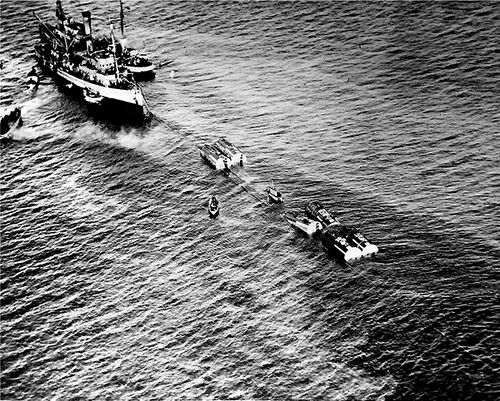
The salvage operation went remarkably well, all things considered. The Navy had learned a lot about open ocean salvage during the S-51 operation two years prior. Those lessons greatly sped the S-4 operation, and she was off the bottom in a little over three months, as opposed to the 9½ months for the S-51.
Please see the Jim Christley article at this link for the story of the S-4.
U.S. Navy photo.
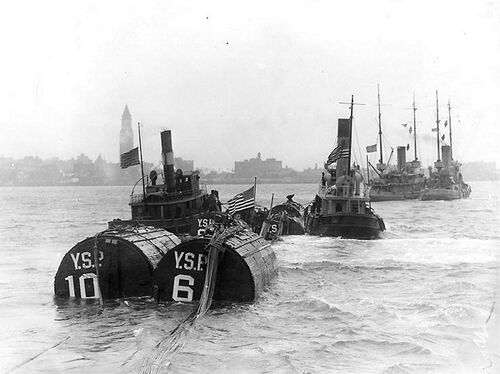
U.S. Navy photo.
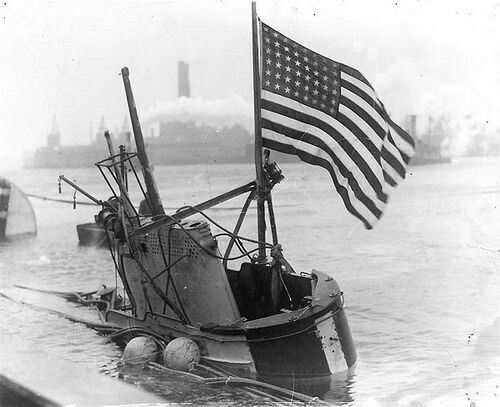
U.S. Navy photo.
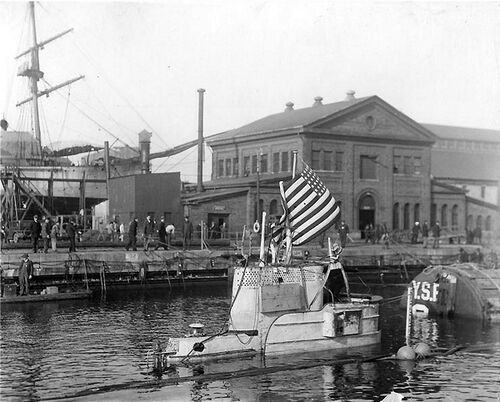
U.S. Navy photo.

U.S. Navy photo.
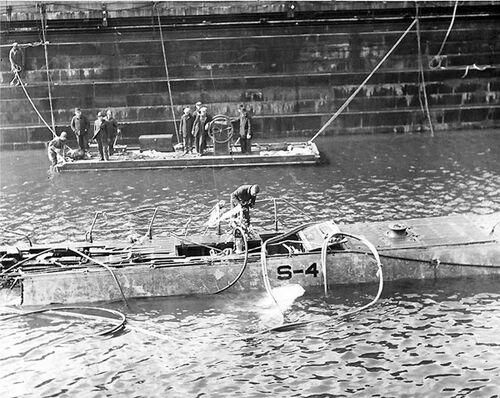
U.S. Navy photo.
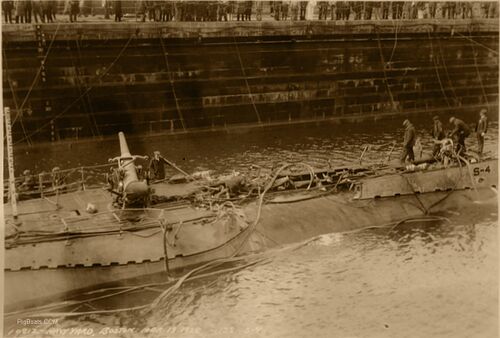
Image provided courtesy of the Stephen B. Luce Library, SUNY Maritime College, Papers of John S. Baylis.
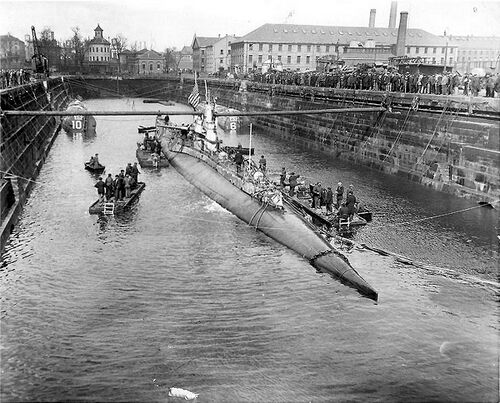
U.S. Navy photo
Image provided courtesy of the Stephen B. Luce Library, SUNY Maritime College, Papers of John S. Baylis via Joe Williams.

mage provided courtesy of the Stephen B. Luce Library, SUNY Maritime College, Papers of John S. Baylis via Joe Williams.
-
U.S. Navy photo.
-
U.S. Navy photo.
-
Image provided courtesy of the Stephen B. Luce Library, SUNY Maritime College, Papers of John S. Baylis via Joe Williams.
-
Image provided courtesy of the Stephen B. Luce Library, SUNY Maritime College, Papers of John S. Baylis via Joe Williams.
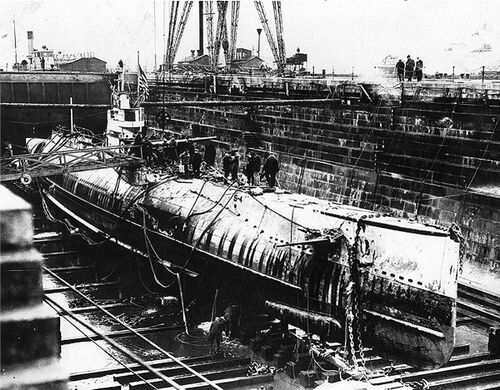
The long sausage looking object on the hull below the waterline beneath the bow planes is a MV sonar, a replacement for the earlier Y-tube mounted on the main deck forward. It was a line array of 12 microphones and was electronically steered. A duplicate array was on the port side.
U.S. Navy photo.
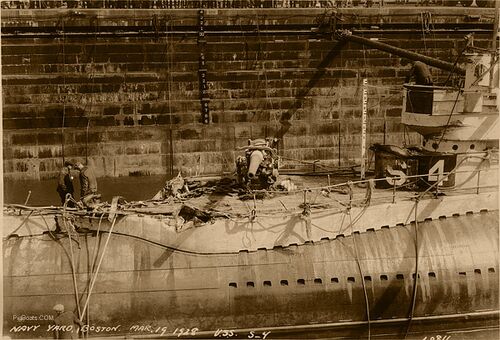
Image provided courtesy of the Stephen B. Luce Library, SUNY Maritime College, Papers of John S. Baylis via Joe Williams.
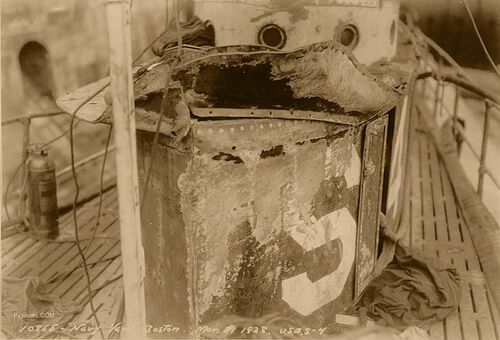
Image provided courtesy of the Stephen B. Luce Library, SUNY Maritime College, Papers of John S. Baylis via Joe Williams.
U.S. Navy photos.
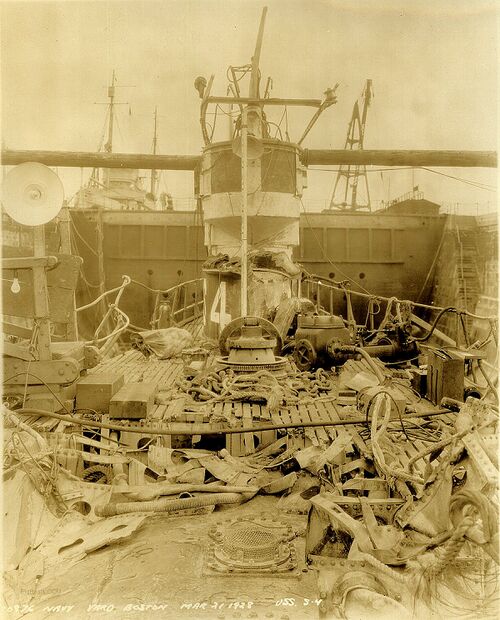
Image provided courtesy of the Stephen B. Luce Library, SUNY Maritime College, Papers of John S. Baylis via Joe Williams.
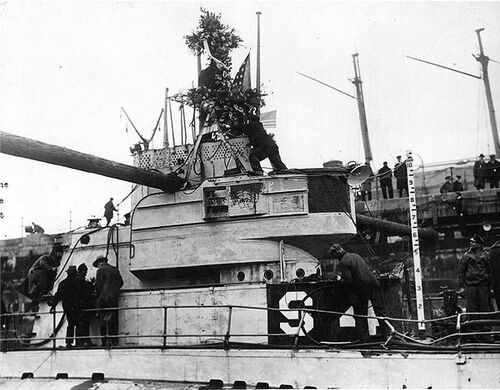
U.S. Navy photo.
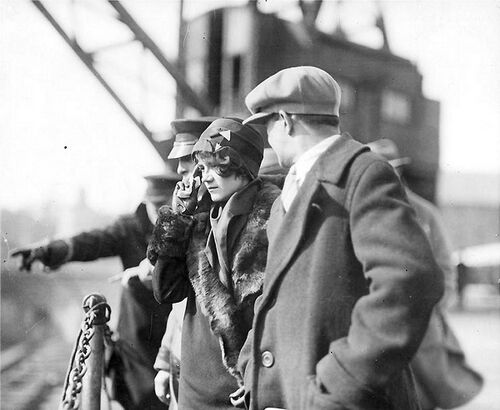
Photo in the private collection of Ric Hedman
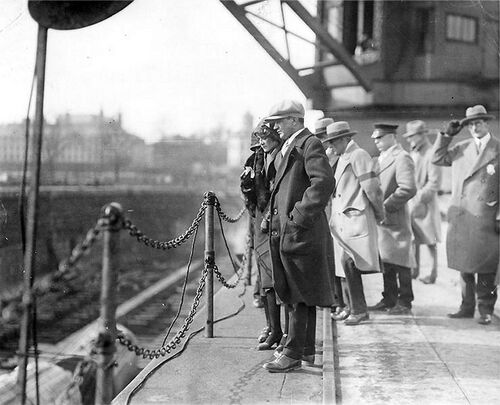
Photo in the private collection of Ric Hedman
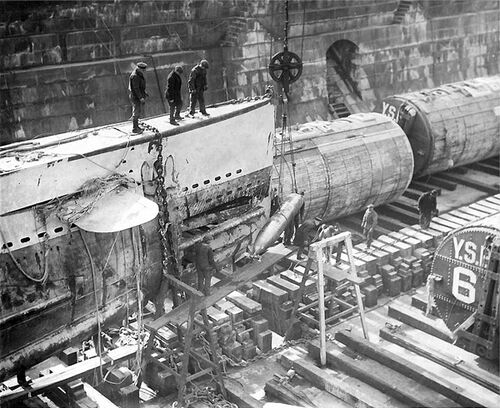
Photo in the private collection of Ric Hedman

Photo in the private collection of Ric Hedman
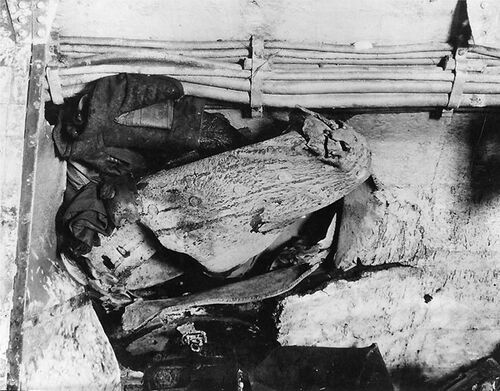
Photo in the private collection of Ric Hedman
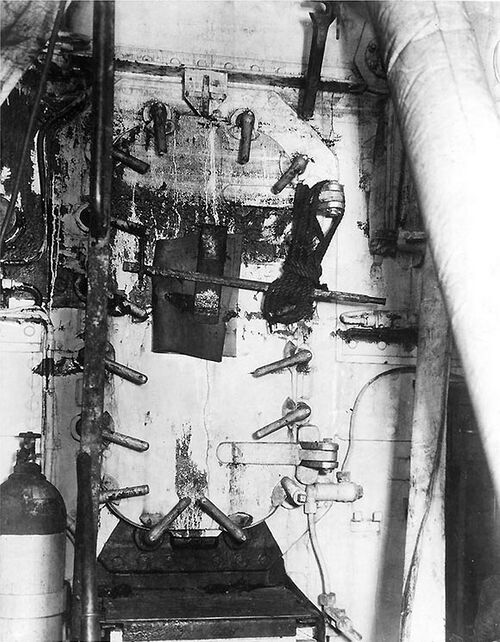
Photo in the private collection of Ric Hedman
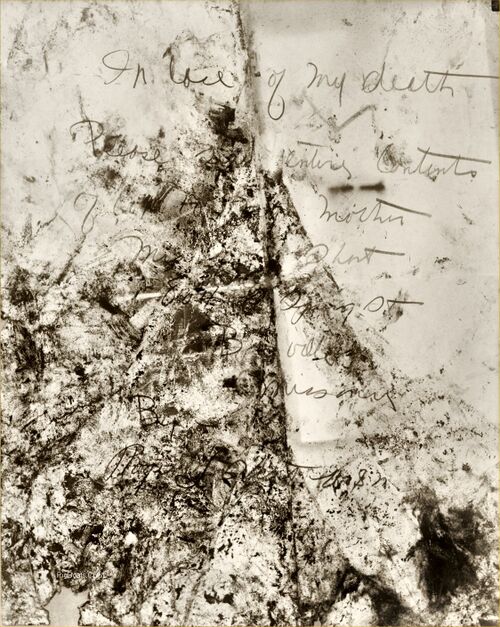
Photo in the private collection of Ric Hedman
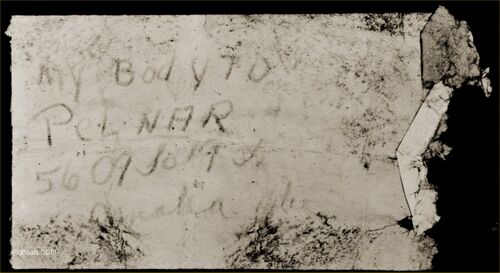
Photo in the private collection of Ric Hedman
-
Walter Bishop
-
Henry Handy Brown
-
Charles Frederick Burrell
-
Charles Beresford Calcott
-
William Franklin Callaway
-
Graham Newell Fitch
-
Charles A. Ford / Civilian
-
Daniel Michael Gavin
-
Dewey Victor Haney
-
Aaron A. Hodges w/Uncle
-
Roy Kehlor Jones
-
Joseph Alfred McGinley
-
John Jospeh Powers
-
Roger Leslie Short
-
Frank Snizek
-
Joseph William Sternman
-
Joseph Leighton Stevens
-
Donald Weller
Other lost Crew with no photo:
Clarence Ferdinand Bethke / Earl Welsh Boone / Elmer Lyfford Cash / Russell Archibald Crabb / William Dempsey / Robert William Diefenbach / John Joseph Fenell / Donald Fred Goering / Peder Haaland / Buster Harris / Arthur Frederick Hodges / Paul Richard Kempfer / J. H. Long / Fred Henry O'Shields / George Pelnar / Rudolf James Rose / Alfred Eugene Seaton / Carl Bernice Strange / Mariano Tedar / Carl Harold Thompson / Walter Ross Tolson / James Johnson White
Photos courtesy of the On Eternal Patrol website
Page created by:
Ric Hedman & David Johnston
1999 - 2023 - PigBoats.COM©
Mountlake Terrace, WA, Norfolk, VA
webmaster at pigboats dot com

